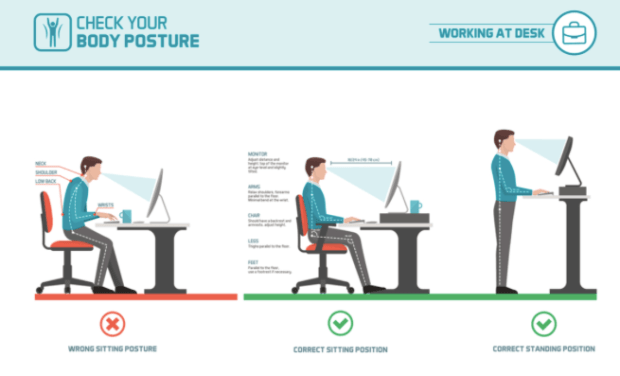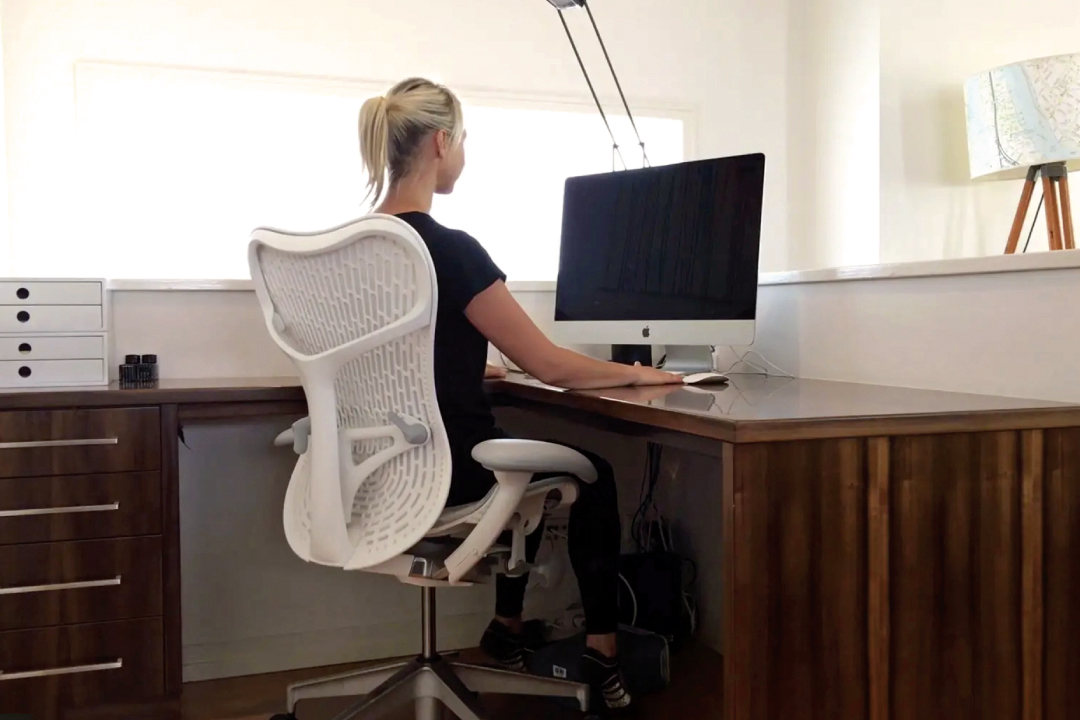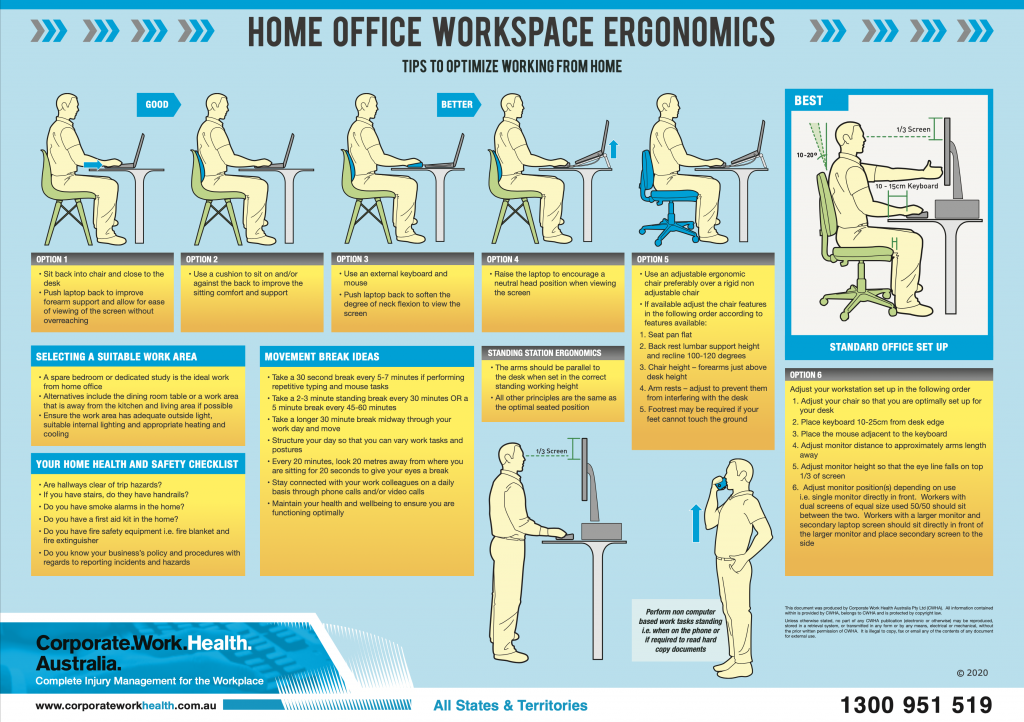With so many of us working from home at the moment you may be thinking “how am I meant to set up my desk?” Here is a short guide with some tips to help you work from home comfortably.
The first thing to remember is there is not just one right way to sit at a desk and it may look slightly different depending on your work demands and your body. It is important to remember that even the best posture is not going to be completely comfortable eight hours a day. Our bodies are just not designed to sit for that long! Your posture should be comfortable and natural for you.

Seat
First of all, sit with your feet flat on the floor and your chair height so that your hips are just above your knees. A good seat that is adjustable and has some lumbar support will serve you well. If your seat does not have any low back support an easy solution is to fold up a towel and place it behind your low back. You should be sitting with a slight tilt backwards at around 100-120 degrees, rather than directly upright.
Desk
The desk should be at a level where your elbows are by your side and forearms can rest on the desk around 90 degrees. Make sure that the things you use regularly, like the keyboard and mouse, are within reach while sitting and you are not stretching to reach them repeatedly throughout the day.
Screen
Screen height is one of the key things that can make a big difference to the neck and upper back strain. If you imagine your screen is divided into thirds: top, middle, and bottom. When sitting comfortably, your eyes should fall at the line dividing the top and middle thirds of the screen. This is usually where laptops fail. If you are trying to work with a laptop, consider purchasing a separate keyboard so that you are able to raise the screen.
It is important to stand and move often. As a general rule getting up every hour to stretch, move and reset will help keep your body feeling good.
If you would any further advice on setting up your desk at home, our team are here to guide you. This information is quite general and a more detailed assessment by an Osteopath or Physiotherapist can help individualise the set-up. We are available for 1-on-1 appointments or take advantage of our Telehealth option, which should allow us to view your set-up and help tailor it to your needs.
More Tips on Improving Your Posture at Home in this Q&A With the Experts on Porch.com.
_ _ _
Written by Osteopath Natalie Anderson



